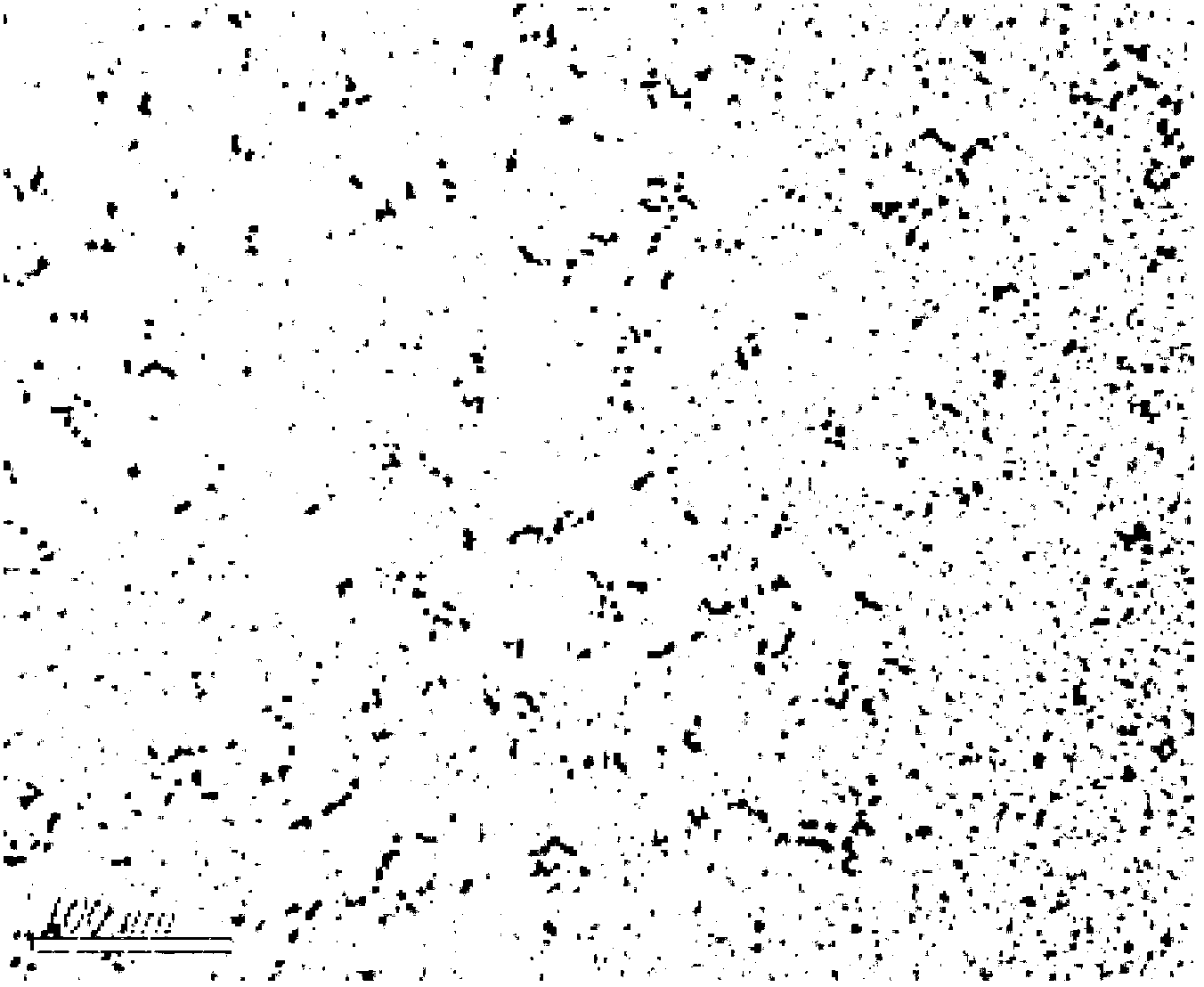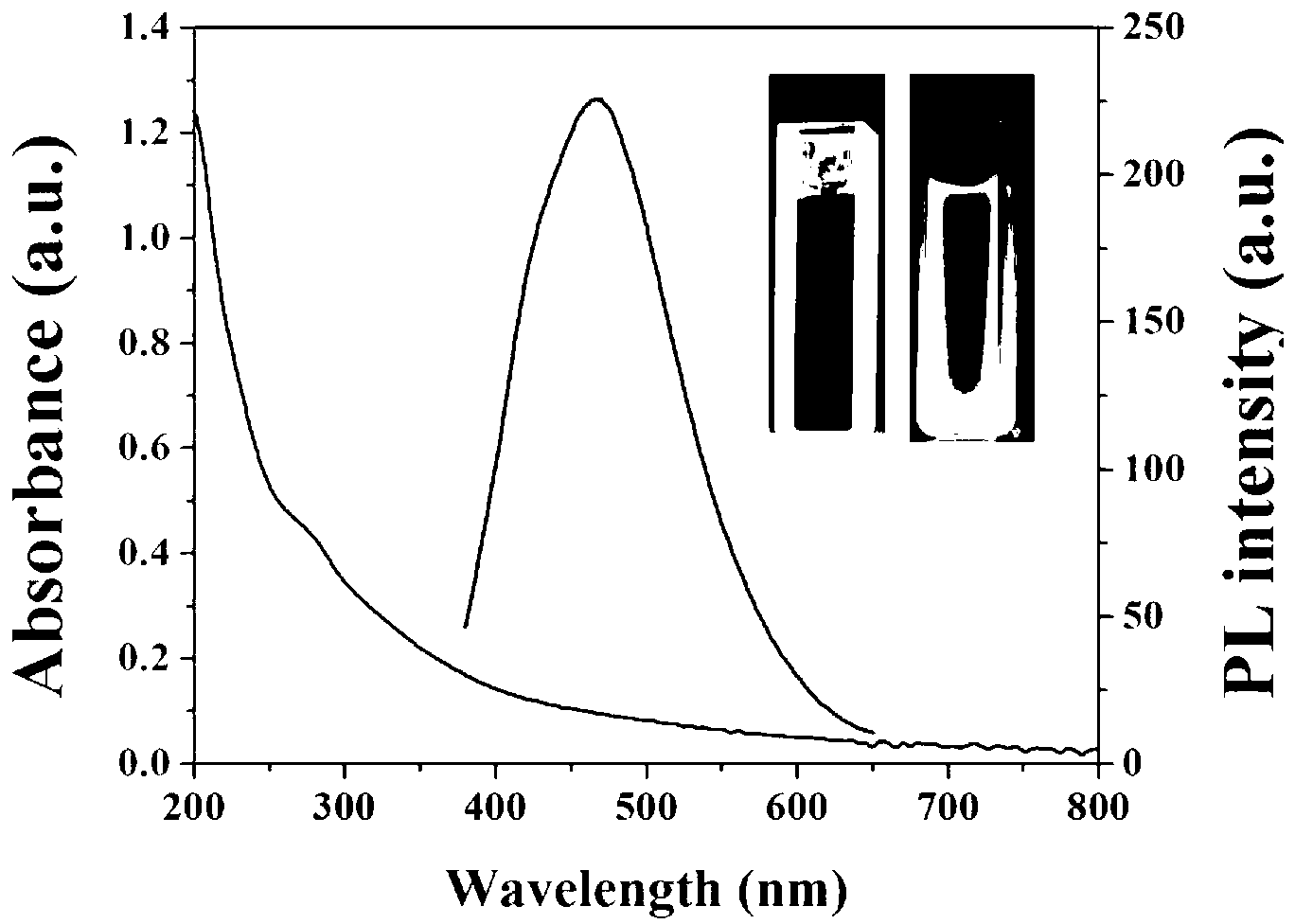Preparation method of environment-friendly economic luminescent carbon quantum dot
A technology of carbon quantum dots and fluorescence, which is applied in the fields of nanomaterials and biomedical engineering, can solve the problems that limit the large-scale production and practical application of fluorescent carbon quantum dots, complex follow-up processing methods, expensive raw materials, etc., and achieve small steric hindrance, The effect of simple preparation process equipment and high optical performance
- Summary
- Abstract
- Description
- Claims
- Application Information
AI Technical Summary
Problems solved by technology
Method used
Image
Examples
Embodiment 1
[0034] Embodiment 1: Weigh 1g bagasse and add to 20ml double distilled water. The reaction solution was put into a stainless steel reaction kettle lined with 50ml polytetrafluoroethylene, and heated in an electric oven at a constant temperature of 180°C for 1 hour to obtain a light yellow solution containing carbon quantum dots. After the solution is naturally cooled, filter with a medium-speed filter paper to remove insoluble black precipitates, centrifuge at 15,000g to remove large particles, collect the supernatant and inject it into a dialysis bag with a molecular cutoff of 1,000Da for dialysis, the dialysis time is 72h, and change it every 12h water. The dialyzed product was rotovaped to obtain a concentrated solution. The concentrated solution was freeze-dried at -50°C to powder form, and the yield was 0%.
Embodiment 2
[0035] Example 2: Weigh 1 g of bagasse and add it to 20 ml of 0.6 M aqueous sodium hydroxide solution. The reaction solution was put into a stainless steel reaction kettle lined with 50ml polytetrafluoroethylene, and heated in an electric oven at a constant temperature of 180°C for 1 hour to obtain a light yellow solution containing carbon quantum dots. After the solution is naturally cooled, filter with a medium-speed filter paper to remove insoluble black precipitates, centrifuge at 15,000g to remove large particles, collect the supernatant and inject it into a dialysis bag with a molecular cutoff of 1,000Da for dialysis, the dialysis time is 72h, and change it every 12h water. The dialyzed product was rotovaped to obtain a concentrated solution. The concentrated solution was freeze-dried to powder at -50°C to obtain carbon quantum dots with high fluorescence performance, with a yield of 2.17%.
Embodiment 3
[0036] Example 3: Weigh 1 g of bagasse and add it to 20 ml of 0.8 M sodium hydroxide aqueous solution. The reaction solution was put into a stainless steel reaction kettle lined with 50ml polytetrafluoroethylene, and heated in an electric oven at a constant temperature of 180°C for 2 hours to obtain a light yellow solution containing carbon quantum dots. After the solution is naturally cooled, filter with a medium-speed filter paper to remove insoluble black precipitates, centrifuge at 15,000g to remove large particles, collect the supernatant and inject it into a dialysis bag with a molecular cutoff of 1,000Da for dialysis, the dialysis time is 72h, and change it every 12h water. The dialyzed product was rotovaped to obtain a concentrated solution. The concentrated solution was freeze-dried to powder at -50°C to obtain carbon quantum dots with high fluorescence performance, with a yield of 3.24%.
PUM
 Login to View More
Login to View More Abstract
Description
Claims
Application Information
 Login to View More
Login to View More - R&D
- Intellectual Property
- Life Sciences
- Materials
- Tech Scout
- Unparalleled Data Quality
- Higher Quality Content
- 60% Fewer Hallucinations
Browse by: Latest US Patents, China's latest patents, Technical Efficacy Thesaurus, Application Domain, Technology Topic, Popular Technical Reports.
© 2025 PatSnap. All rights reserved.Legal|Privacy policy|Modern Slavery Act Transparency Statement|Sitemap|About US| Contact US: help@patsnap.com



